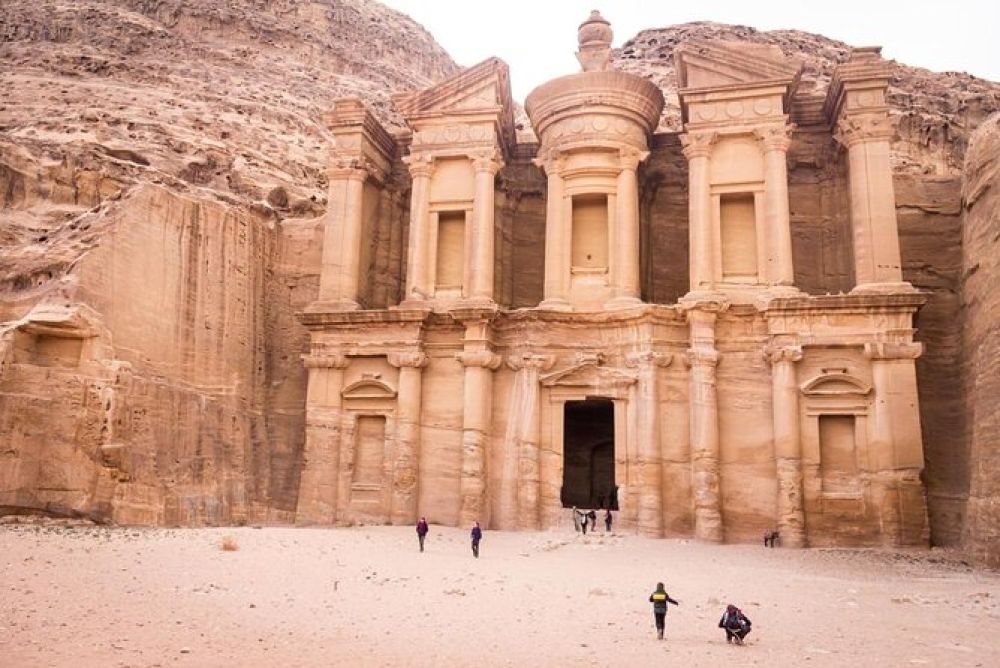

The ancient city of Petra, nestled in the heart of Jordan, has been a beacon of historical intrigue and architectural splendor for centuries. Amongst its many treasures, The Monastery (Ad Deir) stands out as one of the most majestic structures within this archaeological wonder. Carved out of the rose-red sandstone cliffs, The Monastery dates back to the 1st century AD and was originally built as a Nabataean tomb. Its monumental facade and remote location make it a significant landmark within Petra.
Tourism at Petra, and The Monastery in particular, began to flourish in the early 19th century after the rediscovery of the site in 1812 by Swiss explorer Johann Ludwig Burckhardt. This marked the beginning of a new era as travelers and scholars from around the world started to explore and document the ancient city. The Monastery, also known as "Ad Deir," slowly began to attract attention for its grandeur and mystery.
The development of tourism infrastructure in Jordan during the 20th century made Petra more accessible to international tourists. In 1929, the first hotel near Petra was built, further encouraging visitors. By the mid-20th century, The Monastery, along with the wider Petra site, was gaining fast popularity, especially after being designated as a UNESCO World Heritage Site in 1985, which provided a significant boost to its global recognition.
In recent years, tourism trends at The Monastery have evolved with advancements in technology and changes in tourist behavior. Visitors can now take advantage of mobile apps and virtual tours to enrich their experience. Moreover, the trend of eco-tourism has impacted how tours are conducted, with a focus on preserving the site’s integrity. Social media has also played a pivotal role in promoting The Monastery, with its iconic façriade often featured on platforms like Instagram, which has drawn a new demographic of travelers eager to capture its beauty.
The journey to The Monastery is no small feat, involving an arduous climb of approximately 800 steps. However, the breathtaking view and the sheer size of the facade, measuring 47m wide by 48m high, make the effort worthwhile. Tourists often visit during the early morning or late afternoon to enjoy cooler temperatures and optimal lighting for photography.
Tourism has had a profound impact on the local Bedouin communities, bringing economic opportunities through the provision of guide services, souvenir sales, and other tourist-related activities. Efforts have been made to ensure that the growth in tourism is sustainable, balancing the needs of visitors with the conservation of this ancient site.
As interest in historical and cultural tourism continues to grow, The Monastery in Petra is set to remain a top attraction for travelers worldwide. Efforts by local and international organizations are focused on preserving the structure from the wear and tear of natural elements and human interaction, ensuring that this wonder continues to awe visitors for generations to come.